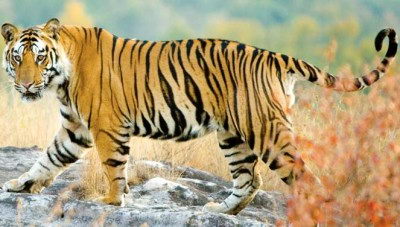In order to instigate wildlife conservation efforts in India, World Wildlife Fund has set up various groups. India hosts diverse kinds of wildlife species possibly due to the broad range of weather, soil, climate, and other similar factors. On the negative side, however, there are certain species that are threatened or vulnerable and are required protection. Perhaps the need of the time is to put more and more conservation efforts to protect wildlife in India.
Wildlife Conservation Efforts in India
In the last few decades, human encroachment was one of the biggest threats to facing India’s wildlife. Indian Government built many National Parks in order to facilitate endangered species up to some extent. The first park was established in 1935; besides, the Project Tiger was also enacted in 1972. At the beginning of the 20th century, there were around 40,000 tigers in India as compared to the tiger consensus of 2008 which revealed only 1,411 tigers remaining. The ‘Project Tiger’ is considered to be the most successful conservation project all throughout India. Currently, there are around 39 Project Tiger wildlife reserves in India encompassing an area of more than 37,761 sq. km. Many rhino’s are survived and conserved in the Kaziranga National Park.
- The Forest Conservation Act 1980 was enacted to lessen the large-scale habitat destruction caused by deforestation.
- India also indorsed the Convention on International Trade in Endangered Species of Wild Fauna and Flora (CITIES) in 1976. As a result, ban was imposed on the commercial trading of Asian elephants which involved the export of ivory.
- There has been a significant change in the Forest Department’s planning policy, which not only brought an end to the alteration of first-growth forests into eucalyptus plantations, but it also swung the importance from a commercially-centered forest management to the conservation-centered forest management.
- The elephants have enjoyed an absolute protection in Uttar Pradesh, since the promulgation of a Wild Elephant Protection Act 1879. The authorities are also putting their efforts to instigate Rajaji National Park, Motichur and Chilla reserves.
- The Forest Department also compensated the families whose persons were killed by the wild animals.
- The capturing of elephants has been superseded.
- A new conservation area was also established which was named as Nilgiri Biosphere Reserve covering 5,520 km2. This area protects elephants ranging from North of Palghat Gap in Karnataka, Tamilnadu, and Kerala.
- The Karnataka state government has decided to exclude tourist development on elephant migration routes all throughout the Kabbini River.
Significance of Wildlife Conservation | Wildlife Conservation Efforts in India
- The habitat destruction and deforestation are growing at a rapid pace which is why some of the animal lovers are determined to do their best to conserve endangered wildlife species. The wildlife is important for these chief reasons.
- It goes without saying that wildlife creatures have added a great deal to the natural splendor of nature and their loss is actually the loss of green heritage.
- The wildlife also contributes to the economic value of one’s country since it offers beneficial matters such as plants, meat, skins, furs, and fibers.
- While looking deeply into the wildlife, scientists have found out many medical products and life processes.
- Thanks to the wildlife without which there would no balance living systems of earth; besides, it ensures the survival of life.
Popular National Parks of India
- Corbett National Park, Uttar Pradesh
- Gir National Park, Sanctuary in Gujarat
- Bandhavgarh National Park, Madhya Pradesh
- Kanha National Park, Madhya Pradesh
- Sariska Wildlife Sanctuary in Rajasthan
- Periyar Wildlife Santuary in Kerala
- Kaziranga National Park in Assam
- Sultanpur Bird Sanctuary
- Desert National Park
Wildlife Threats | Wildlife Conservation Efforts in India
One of the foremost reasons for the population decline in wild animals across India is overcrowding. The wildlife sanctuaries and National Parks have become overcrowded since the time and therefore the capacity has depleted to a certain extent.
The tourism in the National Parks is on the rise each day possibly due to the increasing fame of eco-tourism and adventure tourism. Subsequently, it leads to wildlife road fatalities together with the increased vehicle pollution.
People are often involved in the wild fire or innocent campfires that lead to the killing of animals and delimiting their natural habitats.
Some chemical industries have also contributed to the wildlife destruction. These industries discharge chemical and other toxic effluents into the water thereby poisoning it.








Leave a Reply